-
Top 10 U.S. Dairy Exporter Blog Posts of 2015
By USDEC December 31, 2015- Tweet
Hits from our blog's first year include research summaries, concise market data analysis and the story of how four U.S. farmers wowed dairy buyers in Singapore.
It was a tough year for global dairy markets but a rewarding one for The U.S. Dairy Exporter Blog and the people who work on it, including me, the blog’s editor. Highlights include:
- We birthed the blog in February with a stated goal to provide global dairy market analysis, research and news in bite-sized portions that can be easily viewed on any mobile device
- We created content, much of it culled and repurposed from more in-depth USDEC research, for our primary target audiences: USDEC members and the broader U.S. dairy industry
- We kept our ultimate mission in mind, to disseminate dairy exporting intelligence that helps our industry increase the volume and value of U.S. Dairy exports
 USDEC has other communications platforms, and a recent survey of our members indicates they are well-read. This includes our redesigned website, usdec.org, and our members-only newsletter, Global Dairy eBrief.
USDEC has other communications platforms, and a recent survey of our members indicates they are well-read. This includes our redesigned website, usdec.org, and our members-only newsletter, Global Dairy eBrief.Then why a blog? The blog format is more accessible, personal and timely than other platforms—especially if you subscribe to get updates sent instantly to your inbox.
What? You haven’t subscribed yet? Learn more here. Also, as we head into 2016, spread the word to people you know in the U.S. dairy industry who are interested in exports.
Here are your top 10 posts of 2015, measured by page views, in descending order:
10. Eight Reasons Ireland Won't Boost Milk Production 50% in 5 Years

Based on a USDEC research report, we said EU milk caps were lifting Irish spirits, but that clouds would block sunny government forecasts. Some in the EU took exception. Ross Christieson, USDEC's senior vice president, market research and analysis, made this provocative and perhaps prophetic statement: “In the dairy industry, people sometimes view volume as king. But if volume does not prove profitable are the Irish farmers kings?"
Further reading: "European Union: The Impact of the Removal of Milk Quotas in 2015," a research report by the U.S. Dairy Export Council you can request here.
9. Algeria, Egypt, Morocco Ripest North African Markets for U.S. Dairy
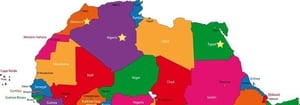
U.S. exports were down overall in 2015, but some markets opened up, with encouraging remaining upside, including these three countries in North Africa:
- Algeria imports the most dairy products of the three nations, and is the No. 3 whole milk powder (WMP) importer and No. 4 skim milk powder (SMP) buyer in the world
- Egypt has the largest population of the three nations, and is building a reputation as a regional supplier of processed cheese and other foods that utilize dairy ingredients
- Morocco has the fastest-growing economy of the three nations and is a growing importer of cheese, butter and MPC to manufacture processed cheese, yogurt and other products
Further reading: “North Africa: Dairy Markets 2015,” a research report by USDEC you can request here.
8. Reasons the United States is No. 1 in Cheese

U.S. Dairy was the No. 1 exporter of cheese in 2014, according to the latest available data when this post was published. New Zealand rose to No. 1 in 2015, partly because New Zealand changed its product mix to emphasize cheese.
According to the latest Dairy: World Markets and Trade report from USDA (page 15), New Zealand will export an estimated 325,000 metric tons of cheese in 2015 and the U.S. will export 315,000.
Despite the closeness of the battle to be No. 1, the following factors argue in favor of the United States as the overall cheese leader:
- The United States has the largest supply of cow’s milk in the world
- Production is year-round, which guarantees consistent product availability
- An abundance of land, providing an unrestrained capacity to grow as global demand increases
- Ongoing investments in research and technology
- State-of-the-art production facilities
- Great-tasting cheese, as evidenced by medals at the 2014 World Cheese Awards and the 2014 World Championship Cheese Contest, accounting for 67% of the total medal count
Further reading: USDEC Seminars Educate Global Buyers About U.S. Cheese
7. How Russia's Embargo of EU is Hurting U.S. Dairy Exports
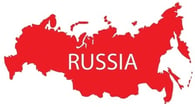 Just as New Zealand had to change its product mix due to reduced demand from China, the European Union found itself in a similar situation with the Russian dairy embargo.
Just as New Zealand had to change its product mix due to reduced demand from China, the European Union found itself in a similar situation with the Russian dairy embargo.For the first seven months of 2014, prior to the start of the embargo, EU dairy suppliers were exporting an average of 18,604 tons of cheese and 2,510 tons of butterfat per month to Russia.
With the loss of their biggest cheese customer, EU suppliers channeled rising milk production into SMP and butter. They aggressively pursued SMP buyers in Southeast Asia and the Middle East/North Africa, which intensified competition for U.S. suppliers in those key markets.
Further reading: New Zealand and EU Shift Dairy Product Mixes
6. China Imports of Whole Milk Powder Lowest Since 2012
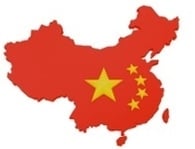
This blog post, published on June 2, was a harbinger of things to come.
China dairy imports were down nearly 40 percent in the first four months of the year—the equivalent of pushing back about 562,000 tons of milk per month. Put another way, that’s the same as if milk production from the five major exporters (EU-28, United States, New Zealand, Australia and Argentina) increased by 2.4 percent this year.
As the year came to an end, the USDA estimated (on pages 19 and 21 of this report) that China’s SMP imports will be down 22.9 percent and WMP imports down 53.8 percent from 2014.
Further reading: Dairy Export Opportunities Series: China
5. Global Dairy Markets May not Fully Rebound Until 2017

Readers were understandably concerned about the global dairy recession and they turned to USDEC as their trusted source of information to navigate choppy waters.
This was especially evident with the USDEC Global Outlook Webinar. More than 800 people registered for the event, and those who attended on Dec. 1 got a candid assessment from USDEC market experts Alan Levitt and Marc Beck.
“What we have today is most likely what we will have for 2016—a market looking for equilibrium, an equilibrium that is sustainable for the entire supply chain,” noted Beck, USDEC executive vice president, strategy and insights. “It may be 2017 before we return to a scenario where supply and demand are more closely aligned."
Watch the full webinar: The archived version of the USDEC Global Market Outlook is now available for viewing online. If you are registered already, you may view the recording by logging in with your email address here. If you did not register, you can still do so, and then watch the recording. Follow this link.
4. Global Dairy Market Rebound Not Expected Until mid-2016 at Earliest

An earlier webinar—held in early September—offered this blunt assessment: “We don’t think real recovery is at hand.”
Unrelenting milk production growth and heavy inventories will continue to weigh on the global dairy market, forestalling a meaningful price recovery until at least mid-2016, according to USDEC’s Marc Beck.
Further reading: Six Factors Sure to Influence U.S. Dairy Exports in 2016
3. Six Growth Drivers for U.S. Dairy in Southeast Asia
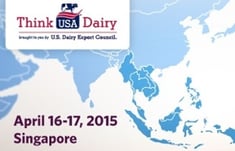
In a tough year, a two-day U.S. Dairy Business Conference in Singapore provided a needed boost.
More than 100 foodservice operators and dairy and food processing companies from Southeast Asia connected with U.S. dairy suppliers at the USDEC event. It was an important group to reach because Southeast Asia is particularly fertile for dairy export growth. In this post, USDEC identified six reasons why:
- Booming population
- Steady economies
- Thriving food manufacturing industry
- Foodservice expansion
- Youthful demographics
- Healthier lifestyles
Further reading: Editor’s Advice to U.S. Dairy Exporters: “Be There”
2. 10 Shareable Charts Showing Impact of U.S Dairy Exports
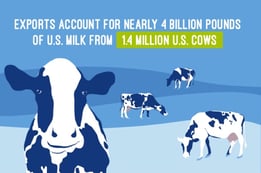
With this collection of charts, readers saw an opportunity to share the growth story of U.S. dairy exports via social media.
One of the charts depicted a 39 percent rise in the value of U.S. dairy exports from 2012 and 2014.
Curious? Check out the charts—and feel free to share them with others!
Learn more: See the video, Why U.S. Dairy will be the World’s Most Dependable Supplier
1. U.S. Dairy Farmers Move Audience of more than 100 Importers in Singapore

As we noted earlier, The U.S. Dairy Business Conference in Singapore was a bright spot in a challenging year.
And the highlight within the highlight was a presentation by four U.S. dairy farmers, demonstrating their commitment to quality, animal care, the environment and relationships.
Supported by vivid photography, the farmers won the hearts and minds of attendees.
Pictured in this photo on the right, Jane Lim is marketing director of Wee Hoe Cheng, a 65-year-old company that distributes food ingredients throughout Southeast Asia from its base in Singapore. She said she was so moved by the stories and pictures of the U.S. dairy farmers that, “I felt my heart go out to them and their families as if I were on their farms."
Jane Lim said the the presentation's theme of "U.S. Family Farm Stories" resonates in Southeast Asia because a "commitment to the future through the continuity of family is a very important value to us." WHC, co-owned by Jane Lim and her husband, is a family-oriented business with 30 employees, five of them family members. That includes Jane Lim's daughter, sales manager De Min Lim (photo, left), who attended the conference with her mother.
Since it was the No. 1 story of the year, our readers obviously found it compelling, as well. Traffic was fueled by U.S. dairy farmers sharing and "liking" the post on Facebook.
Watch and hear their stories: We turned the U.S. farmers' Singapore presentations into videos, focusing on the topics of quality, animal care, the environment and relationships.
Subscribe to the U.S. Dairy Exporter Blog
The U.S. Dairy Export Council fosters collaborative industry partnerships with processors, trading companies and others to enhance global demand for U.S. dairy products and ingredients. USDEC is primarily supported by Dairy Management Inc. through the dairy farmer checkoff. How to republish this post.
10 Most Recent Posts
Most Popular Posts in Past Year
Index of Posts by Topic
- #GotDairyJobs (4)
- About USDEC (65)
- Africa (6)
- Australia (4)
- Blog (8)
- Brazil (4)
- Canada (20)
- Central America (1)
- Cheese (58)
- Chile (1)
- China (54)
- Common food names (7)
- Company News (19)
- Consistent Supply (1)
- Crisis Management (3)
- Cuba (2)
- Dairy (6)
- Dairy checkoff (9)
- Dairy Ingredients (5)
- Dairy Management Inc. (2)
- Dairy Resources (1)
- Dairy Supply Chain (1)
- Dairy Trends (5)
- Documentation (3)
- EU (24)
- Experts on Dairy Exports (4)
- Exporter of the Year (2)
- Exports (24)
- Farmer leaders (1)
- Farming (38)
- Food Aid (8)
- Food Safety (8)
- Foodservice (3)
- Free trade agreements (34)
- Future trends (1)
- Geographical Indications (GIs) (10)
- Global Marketing (86)
- Global Shipping Crisis (1)
- Got Jobs? (9)
- Indonesia (1)
- Innovation (17)
- Japan (17)
- Krysta Harden (1)
- Market Access (25)
- Market Conditions (266)
- Member Services (17)
- Mexico (41)
- Middle East (9)
- Middle East & North Africa (3)
- Middle East/North Africa (9)
- Milk (4)
- Milk Protein Concentrate (MPC) (2)
- New Zealand (11)
- Next5% (20)
- Nonfat Dry Milk/Skim Milk Powder (8)
- Nutrition (19)
- Product Innovation (6)
- Protein (4)
- Regulations (5)
- Research & Data (324)
- Russia (3)
- Singapore (10)
- South America (8)
- South Korea (10)
- Southeast Asia (25)
- Strategic Insights (1)
- Supply (1)
- Sustainability (26)
- Technology (2)
- ThinkUSADairy (5)
- TPM23 (1)
- TPP (13)
- Traceability (8)
- Trade Barriers (5)
- Trade Data (7)
- Trade Policy (72)
- TTIP (5)
- UHT Milk (7)
- USMCA (2)
- Vietnam (4)
- Whey (6)
- Whey Ingredients (2)
- Whey products (10)
- Whole Milk Powder (WMP) (3)
- World Dairy Expo (1)
- World Milk Day (1)
- Yogurt (1)
Index of Posts by Date, Author
- June 2021 (13)
- March 2015 (12)
- September 2015 (12)
- April 2015 (11)
- December 2015 (11)
- March 2014 (10)
- February 2015 (10)
- October 2015 (10)
- October 2014 (9)
- June 2015 (9)
- July 2015 (9)
- November 2015 (9)
- March 2016 (9)
- October 2019 (9)
- September 2013 (8)
- May 2015 (8)
- August 2015 (8)
- January 2016 (8)
- February 2016 (8)
- March 2017 (8)
- December 2018 (8)
- May 2019 (8)
- December 2019 (8)
- June 2014 (7)
- November 2016 (7)
- May 2017 (7)
- May 2018 (7)
- July 2020 (7)
- June 2023 (7)
- July 2016 (6)
- August 2018 (6)
- October 2018 (6)
- November 2018 (6)
- February 2019 (6)
- June 2019 (6)
- August 2019 (6)
- March 2020 (6)
- April 2020 (6)
- June 2020 (6)
- June 2022 (6)
- February 2014 (5)
- June 2016 (5)
- August 2016 (5)
- September 2016 (5)
- December 2016 (5)
- February 2017 (5)
- July 2017 (5)
- October 2017 (5)
- January 2018 (5)
- April 2018 (5)
- June 2018 (5)
- July 2018 (5)
- September 2018 (5)
- January 2019 (5)
- March 2019 (5)
- April 2019 (5)
- July 2019 (5)
- September 2019 (5)
- November 2019 (5)
- January 2020 (5)
- August 2020 (5)
- October 2020 (5)
- April 2021 (5)
- January 2022 (5)
- May 2013 (4)
- September 2014 (4)
- April 2016 (4)
- May 2016 (4)
- October 2016 (4)
- January 2017 (4)
- April 2017 (4)
- June 2017 (4)
- August 2017 (4)
- September 2017 (4)
- December 2017 (4)
- February 2018 (4)
- February 2020 (4)
- May 2020 (4)
- February 2022 (4)
- September 2022 (4)
- April 2023 (4)
- December 2023 (4)
- November 2017 (3)
- March 2018 (3)
- September 2020 (3)
- December 2020 (3)
- February 2021 (3)
- May 2021 (3)
- August 2021 (3)
- December 2021 (3)
- March 2022 (3)
- April 2022 (3)
- May 2022 (3)
- October 2022 (3)
- December 2022 (3)
- May 2023 (3)
- July 2023 (3)
- November 2023 (3)
- March 2011 (2)
- June 2011 (2)
- September 2011 (2)
- March 2012 (2)
- June 2012 (2)
- July 2012 (2)
- March 2013 (2)
- July 2013 (2)
- November 2020 (2)
- January 2021 (2)
- March 2021 (2)
- July 2021 (2)
- September 2021 (2)
- October 2021 (2)
- November 2021 (2)
- July 2022 (2)
- August 2022 (2)
- January 2023 (2)
- March 2023 (2)
- October 2023 (2)
- January 2024 (2)
- February 2024 (2)
- April 2024 (2)
- June 2024 (2)
- July 2024 (2)
- November 2024 (2)
- December 2024 (2)
- February 2025 (2)
- June 2025 (2)
- July 2025 (2)
- September 2025 (2)
- January 2010 (1)
- February 2010 (1)
- March 2010 (1)
- April 2010 (1)
- May 2010 (1)
- June 2010 (1)
- July 2010 (1)
- August 2010 (1)
- September 2010 (1)
- October 2010 (1)
- November 2010 (1)
- December 2010 (1)
- January 2011 (1)
- February 2011 (1)
- April 2011 (1)
- May 2011 (1)
- July 2011 (1)
- August 2011 (1)
- October 2011 (1)
- November 2011 (1)
- December 2011 (1)
- January 2012 (1)
- February 2012 (1)
- April 2012 (1)
- August 2012 (1)
- September 2012 (1)
- October 2012 (1)
- November 2012 (1)
- December 2012 (1)
- January 2013 (1)
- February 2013 (1)
- April 2013 (1)
- June 2013 (1)
- August 2013 (1)
- October 2013 (1)
- November 2013 (1)
- December 2013 (1)
- January 2014 (1)
- April 2014 (1)
- May 2014 (1)
- November 2022 (1)
- February 2023 (1)
- August 2023 (1)
- September 2023 (1)
- March 2024 (1)
- May 2024 (1)
- August 2024 (1)
- September 2024 (1)
- October 2024 (1)
- January 2025 (1)
- March 2025 (1)
- April 2025 (1)
- May 2025 (1)
- August 2025 (1)
- USDEC (183)
- USDEC Staff (160)
- Alan Levitt (119)
- Tom Suber (41)
- Margaret Speich (22)
- Marc A.H. Beck (15)
- Vikki Nicholson-West (11)
- Angélique Hollister (11)
- Tom Vilsack (8)
- Jaime Castaneda (7)
- Matt McKnight (7)
- Véronique Lagrange (7)
- Margaret Speich and Mark O'Keefe (7)
- Ross Christieson (7)
- Paul Rogers (6)
- Shawna Morris (5)
- William Loux (5)
- Alan Levitt and Marc Beck (5)
- Krysta Harden (4)
- USDEC Communications (3)
- Kristi Saitama (3)
- Marilyn Hershey (3)
- Brad Gehrke (3)
- Tom Quaife (2)
- Nick Gardner (2)
- Jim Mulhern (2)
- Alan Levitt and William Loux (2)
- Kara McDonald (2)
- Luke Waring (2)
- Merle McNeil (2)
- Andrei Mikhalevsky (1)
- Rodrigo Fernandez (1)
- Dermot Carey (1)
- Jeremy Travis (1)
- Annie Bienvenue (1)
- Ross Christieson and Shawna Morris (1)
- Becky Nyman (1)
- Paul Rogers and Tom Quaife (1)
- Rick Ortman (1)
- Tony Rice (1)
- Barbara O’Brien (1)
- Paul Rogers and Mark O'Keefe (1)
- Dalilah Ghazalay (1)
- Amy Wagner (1)
- Mitchell Bowling (1)
- Erica Louder (1)
- Brad Scott (1)
- Amy Foor (1)
- Scott Lantz (1)
- Sandra Benson (1)
- Errico Auricchio (1)
- Jaclyn Krymowski (1)
- Krysta Harden, USDEC President and CEO (1)
.png)

